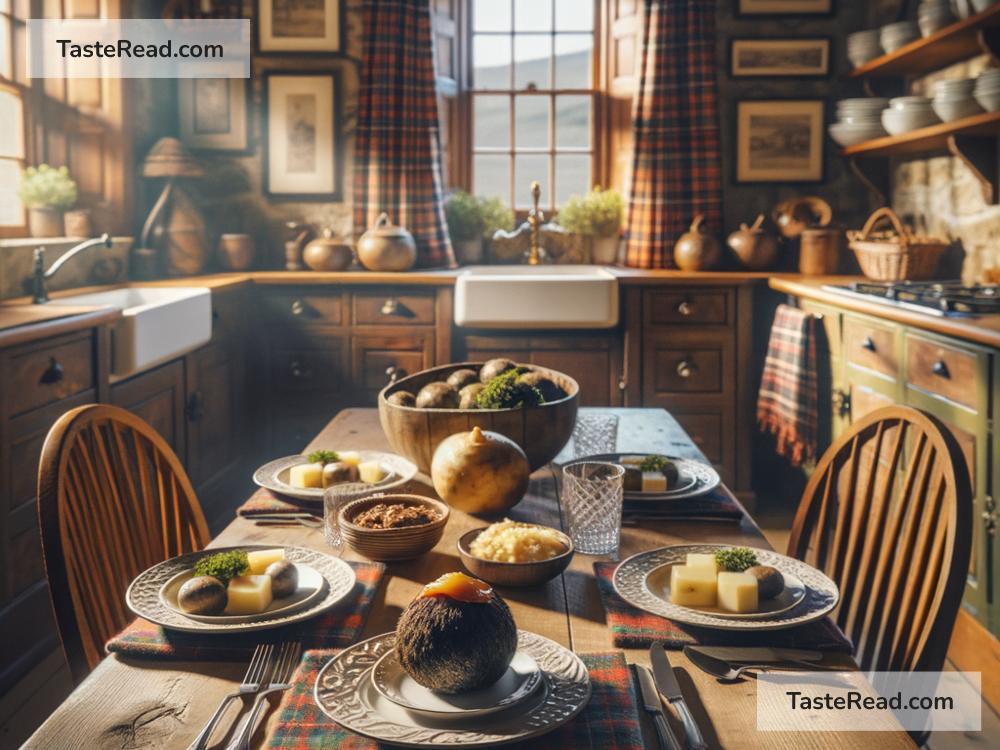Title: Discovering the World of Traditional Scottish Haggis: A Culinary Adventure
When you think of Scotland, what comes to mind? Majestic highland landscapes, ancient castles, the sound of bagpipes, perhaps the sight of kilts, and, of course, the infamous Scottish delicacy — haggis. Today, we will embark on a fascinating journey to explore the tale of traditional Scottish haggis. It’s not just a dish; it’s an integral part of Scottish heritage, steeped in history and bursting with flavor.
Haggis is a savory pudding that combines meat with oatmeal, onions, salt, and spices. It’s traditionally encased in the animal’s stomach, though nowadays, more modern materials might be used. This might sound a bit strange or off-putting to those unfamiliar with it, but in Scotland, haggis is celebrated and loved. It’s a dish that encapsulates the essence of Scottish cuisine, highlighting the country’s knack for creating hearty, comforting, and delicious meals from simple, available ingredients.
But where did haggis come from? The origins of haggis are shrouded in mystery and are the subject of much debate. Some theories suggest that it may have originated from ancient Scandinavian, Roman or even Greek cuisines, as the practice of cooking minced meat inside an animal’s stomach is not unique to Scotland. However, it is Scotland that has embraced haggis and made it their own, heralding it as a national dish.
The first written references to a haggis-like dish in Scotland date back to the 15th century, but it’s likely that its history goes even further back. Traditionally, haggis was a way to utilize every part of a hunts or slaughtered livestock, adhering to a no-waste approach to food that was common in many cultures. When a deer was hunted or a cow was slaughtered, none of it would go to waste. The offal (internal organs) would be minced, mixed with oats (a staple grain in Scotland), and seasoned with whatever spices were on hand. This mixture would then be stuffed into the animal’s stomach, which acted as a cooking bag, and boiled. This efficient use of ingredients not only fed the family but also honored the animal by wasting nothing.
Haggis is most famously associated with Burns Night, a celebration held on January 25th to honor Scotland’s national poet, Robert Burns. Burns penned the poem “Address to a Haggis” in 1787, which heralded the dish as the “Great chieftain o’ the pudding race!” This ode to haggis is recited with great ceremony before cutting into the haggis during Burns Suppers, events that combine food, poetry, and whiskey to celebrate Scottish culture. Burns Night has played a significant role in promoting haggis and Scottish traditions worldwide.
So, what does haggis taste like? This is a question that might follow its curious description. Haggis has a rich, savory flavor with a peppery warmth. The texture is similar to a crumbly sausage, and it is usually served with “neeps and tatties” (turnips and potatoes), creating a hearty, comforting meal. The spices in haggis are warming and aromatic, making it a perfect dish for cold Scottish evenings.
Today, haggis has stepped beyond its traditional roots and inspired chefs around the world to create innovative dishes. From haggis pizzas to haggis burgers, the essence of this traditional Scottish dish is finding new expressions. However, it’s still enjoyed in its classic form, cherished as a symbol of Scottish culinary tradition.
For adventurous foodies keen to try making haggis at home, the process is less daunting than it may seem. However, sourcing the traditional ingredients and the casing might require a bit of searching, especially outside of Scotland.
Embarking on a culinary adventure with haggis is not just about trying a new food; it’s an exploration of Scottish culture, history, and traditions woven into a dish that stands as a testament to Scotland’s resourcefulness and love of good, hearty food. Whether you’re daring enough to make it yourself or simply savor it at a Scottish-themed restaurant or Burns Supper, experiencing haggis offers a unique insight into the heart and soul of Scottish cuisine.
In celebrating haggis, we celebrate the inventive spirit of Scottish cooking and the rich tapestry of traditions that have shaped it over the centuries. So, here’s to haggis: a traditional Scottish dish that, despite its humble beginnings, has captured the imagination and taste buds of generations, securing its place as an enduring symbol of Scotland’s culinary heritage.


